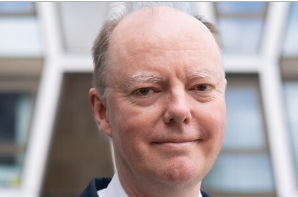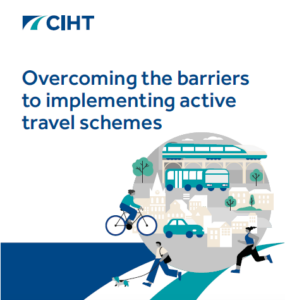Different sectors of the highways and transport industry have been responding to yesterday’s announcement by the Government on plans for a Integrated National Strategy.
The former Secretary of State for Transport, Rt Hon Louise Haigh MP, outlined her vision for an Integrated National Transport Strategy across England during a speech to Mayors and Transport bosses at Leeds Civic Hall.
Responding to the plans, Sue Percy CBE, Chief Executive, CIHT said: “The Chartered Institution of Highways and Transportation (CIHT) has consistently called for the need for there to be an Integrated National Transport Strategy and we welcome the government’s commitment to deliver on one.”
“CIHT has called for such a strategy to provide a clear framework of requirements for all elements of our transport system. This strategy should include the strategic and local highway networks, rail, aviation and maritime and set out how those networks integrate with one another by setting long-term direction that covers urgent and immediate priorities for all these key modes of transport.”
“As part of an integrated transport strategy we believe there is a real need to improve the links between planning and transport – too often we build first and then think about transport infrastructure afterwards. Many of the early indications are that the thinking behind this is in line with what we outlined in our Transport Network Fit For All Our Futures’ and ‘Improving Local Highways’ reports.”
The Government is pursuing a ‘people led approach’ to ensuring transport quality and accessibility is improved throughout the country.
The strategy will be an attempt to harmonise multimodal transport and provide a more seamless door to door travel experience, with TfL and Greater Manchester’s Bee Network referenced, as examples of what the Transport Secretary aims to achieve throughout England.
In addition to the 10-year strategy, the government will reform the appraisal system, to ensure that projects provide increased social value, in addition to transport improvements.
A panel consisting of independent experts (including Professor Glenn Lyons, CIHT President) from industry, academia and civil society will review the Department for Transport’s capital spend portfolio with the aim of driving better economic outcomes for projects.
The Transport Secretary highlighted the importance of harnessing data in rural areas, to manage traffic flows to helping drivers easily find, and pay for, parking.
Ms Haigh also outlined her vision to promote cycling and walking as the optimum for shorter journeys, and prioritising pavement repairs, safe crossing, and cycle infrastructure where the need is most urgent.
CIHT is also pleased to see the increased emphasis placed upon active travel and the increased recognition of accessibility needs, that we called for in the report ‘Creating A Public Realm for All’, it said.
Also responding to the launch of the Integrated National Transport Strategy, Cllr Adam Hug, transport spokesperson for the Local Government Association, said:
“Councils already put people at the heart of their transport planning and investment, whether it’s providing public transport through buses and trams, sustainable travel via walking and cycling paths, or maintaining local roads for residents and visitors to get around.
“Better local transport systems, integrated with devolved services, provides an opportunity for a place-based, user-centred approach to support economic inclusion and people’s everyday lives.
“Greater devolving of powers and funding to local areas will help to realise this ambition to better join-up transport services and we look forward to engaging with government, operators, passengers and the public on what more can be done to achieve this.”
Meanwhile, Tim Burns, Head of Policy at active travel charity Sustrans, said: “The need for an integrated transport strategy that works for everyone was front and centre among our election manifesto asks of the new Government. That’s why we welcome today’s commitment and the vision of integrated transport that puts the needs of people first.
“Walking, wheeling, cycling and public transport have to work hand in hand to deliver a people first approach that improves our health and the environment, provides access to jobs and education, and makes our neighbourhoods better places to live.
“We now need to see the vision turned into reality, through a strategy that puts more resources into giving people greater choice in how they access the things they need to live well. We’ll look forward to working with the government to make this happen.”
Declan Pang, RHA Director of Public Affairs & Policy said: “We look forward to working with the new Government on the development of the Integrated National Transport Strategy to ensure the needs of road freight, van and coach operators are included.
“Reliable, predictable and efficient journeys for freight and coach drivers are key for economic growth and productivity – we need to ensure our roads are better maintained and have the capacity to reduce congestion.”
Also, Mott MacDonald’s Thomas Knight, transport development director for UK and Europe at Mott MacDonald said: “Today’s announcement is not only timely but essential – it’s been more than 25 years since the last integrated transport strategy was created. Communities need a reliable and joined up transport network across all of our towns and cities, that puts people first. By focusing on local leadership and integration, I believe this strategy can help ensure that transport services meet the diverse needs of all passengers.”
Tom also highlighted the pressing need for the strategy: “This new vision is crucial for addressing the disparities in transport quality across the country, ensuring that everyone, regardless of location, has access to reliable and efficient transport options. “The great news is that there is precedent; integrated networks aren’t a new concept. In our recent report ‘Making Transport Fit for the Future’, jointly published with the London Transport Museum, we explored examples like Manchester’s Bee Network which showed how an integrated transport network can rapidly improve the customer experience.”
Tom welcomed the broader economic and social benefits of the strategy: “The government’s focus on delivering projects that provide good value for money and positive outcomes, such as job creation and improved access to education, is crucial. By prioritising investments that boost productivity and support business growth, particularly in less affluent areas, we can drive economic development and create healthier, more vibrant communities.
“You don’t have to look far from where the announcement was made in Leeds to see that quality integrated transport schemes, like the recently announced West Yorkshire Mass Transit programme, can be a catalyst for growth and opportunity.”
Tom also highlighted that integrated networks pave the way for significant technological advancements that benefit commuters.”Integrating networks creates opportunities to upgrade existing technologies and introduce new ones. Enhanced real-time updates and seamless payment systems, for example, can make journeys more convenient and reliable, attracting more people to use public transport.”
In closing, Tom called for collaboration and input from all stakeholders: “We welcome the transport secretary’s call for ideas and look forward to contributing to this national vision. It is essential that we work together – local leaders, transport operators, the wider transport community and the public – to ensure that the strategy delivers greater opportunities, healthier communities and better lives for everyone.”






















